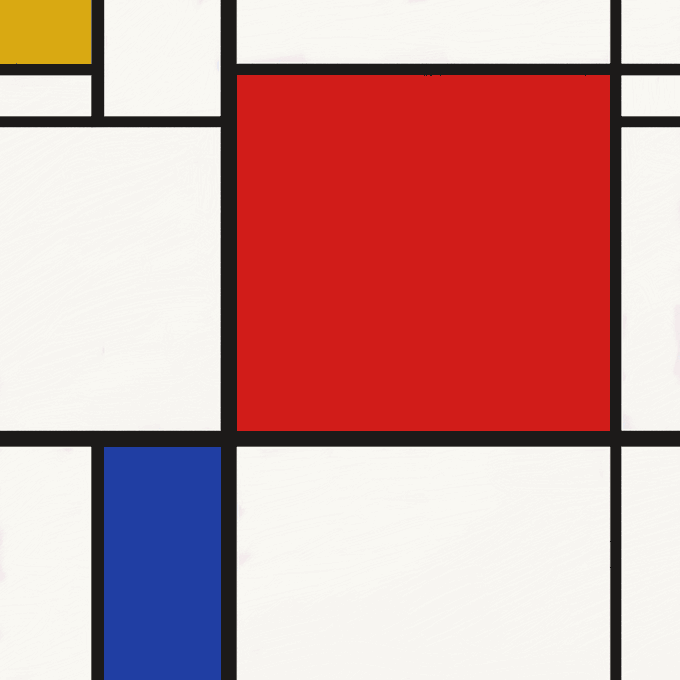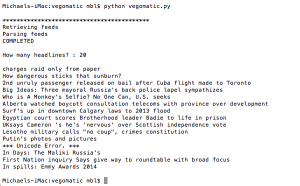
It’s the end of the summer hiatus from teaching and time to summarize:
- At the beginning of the summer, I got back to drawing. I’m only really satisfied with one drawing, shown in the previous post. Others ‘kind-of’ done and waiting for me to look at them and “yeah, that’s a good drawing”—but this hasn’t happened yet. Maybe I need beer goggles. One other image I did was a Mondrian—not a copy, but trying to use the same strategies of placement of line and colour that he used. I’m happy with this one.
- Clock with Tics web app: When I published this web app a couple of years ago, I used PhoneGap and XCode, and it all seemed rather complicated to me. I came back to it because I wanted to get up-to-date with the latest tools for making web apps. I found out about the HTML5 “cache manifest” function, which allows the app to function without having to access the server. So now it works more like a ‘real’ app. View the source code.
- Media Circus web app: I took the time this summer to learn a little more Javascript using CodeAcademy and then settling on CodeAvengers, with the intention of developing a Media Circus web app. It was developed using JQuery Mobile, a development process that was much simpler than PhoneGap/XCode. View the source code.
-

Sample run of Vegomatic Vegomatic: On an off during the summer, I’ve played with ways to generate headline cutups for Media Circus tweets. Vegomatic uses the Python Natural Language Toolkit (NLTK) library. NLTK is used by scholars to analyze texts, so if, for example, you wanted to know how many times “freedom” is said in every U.S. State of the Union address, NLTK is your tool of choice. I had problems managing unicode characters (such as é and ü), so as a last resort I inserted some code to simply ‘give up’ if it encountered unicode. This is why there’s a unicode error in the example. I consider these experiments in themselves a failure, but they led the way to better things, such as RAzer.
- RAzer: This is a Python program that does more sophisticated headline cutups for use in Media Circus tweets.
- allRAzer: As a final, faintly ridiculous conclusion to my efforts to create better tools for making cutups, allRAzer builds a list of cutups using all of the join words that are available in RAzer. Like Vegomatic, this is a Python program that has to be run from a computer that has Python installed.
-
Sectional: This is a theme for RespondCMS. Respond is a responsive content management system that uses Bootstrap 3. I wanted to build a theme to prove that it was possible to create a one-page site in Respond. Mission accomplished.